Request Demo
Last update 09 Dec 2025
MPTP(Central Institute for Experimental Animals)
Last update 09 Dec 2025
Overview
Basic Info
Drug Type Small molecule drug |
Synonyms 1-methyl-4-phenyl-1,2,3,6-tetrahydropyridine |
Target- |
Action- |
Mechanism- |
Therapeutic Areas |
Active Indication |
Inactive Indication- |
Originator Organization |
Active Organization |
Inactive Organization- |
License Organization- |
Drug Highest PhasePreclinical |
First Approval Date- |
Regulation- |
Related
100 Clinical Results associated with MPTP(Central Institute for Experimental Animals)
Login to view more data
100 Translational Medicine associated with MPTP(Central Institute for Experimental Animals)
Login to view more data
100 Patents (Medical) associated with MPTP(Central Institute for Experimental Animals)
Login to view more data
5,869
Literatures (Medical) associated with MPTP(Central Institute for Experimental Animals)01 Jan 2026·EXPERIMENTAL NEUROLOGY
Central amygdala-substantia nigra pars compacta circuit mediates anxiety- and depression-like behaviors in MPTP-treated mice
Article
Author: Ying, Li ; Xiong, Ying ; Xiang, Haijie ; Jiang, Kaiyan ; Li, Qing ; Zou, Wenquan ; Yang, Yuanjian ; Huang, Pengcheng ; Long, Xinyu ; Zhao, Doudou ; Hong, Daojun ; He, Yuting ; Li, Yiheng ; Jia, Ziye ; Tang, Haixia ; Li, Menghua
Parkinson's disease (PD) is characterized by progressive degeneration of substantia nigra pars compacta (SNc) dopamine (DA) neurons, leading to motor dysfunction. Non-motor symptoms of PD, such as neuropsychiatric symptoms (anxiety and depression), often precede motor symptoms and seriously affect quality of life, but the mediating mechanism has not been well understood. The SNc receives input from somatostatin (SOM) neurons in the central amygdala (CeA), which convey reward related information. This study demonstrated that optogenetic activation of CeASOM-SNc circuit induced real-time place preference (RTPP) and alleviated anxiety-like behaviors caused by acute stress. SOM neurons in the CeA preferentially targeted GABAergic neurons in the SNc, optogenetic activation of CeASOM-SNc may activate TH neurons in the SNc through disinhibition. The response of CeA neurons to reward was blunted in MPTP-treated mice, and chronic chemogenetic silencing of CeA-SNc induced anxiety- and depression-like behaviors in mice. Furthermore, chronically chemogenetic activation of CeASOM-SNc or DA neurons in SNc alleviated anxiety- and depression-like behaviors in MPTP-treated mice. Reward-based chocolate intervention alleviated depression-like behaviors of MPTP-treated mice. In summary, our results indicate that the CeASOM-SNc circuit may mediate anxiety- and depression-like behaviors by regulating the activity of SNc DA neurons.
01 Jan 2026·JOURNAL OF NUTRITIONAL BIOCHEMISTRY
Coriander (Coriandrum sativum L. leaves) improves brain and gut pathology in mouse models of brain-first and gut-first Parkinson's disease
Article
Author: Kim, Jin Hee ; Lee, Hanbyeol ; Oh, Myung Sook ; Lee, Minji ; Park, Hi-Joon ; Choi, Yujin
Recently, an increasing number of studies have focused on the microbiota-gut-brain axis in Parkinson's disease (PD), and a new perspective has emerged regarding the regulation of gut health and the microbiome as potential treatments for PD. We focused on coriander, which is consumed worldwide and exhibits significant anti-inflammatory and antimicrobial activities. In this study, we investigated whether coriander ameliorated PD phenotypes in both brain-first and gut-first PD models. C57BL/6J mice were treated with 1-methyl-4-phenyl-1,2,3,6-tetrahydropyridine (MPTP) or Proteus mirabilis (P. mirabilis) for 5 d. In the MPTP-induced model, coriander (30 and 100 mg/kg), including the MPTP injection period, was administered orally for 15 d. In the P. mirabilis-induced model, coriander (100 mg/kg) was administered orally for 21 d, including the period of P. mirabilis administration. The results showed that coriander ameliorated MPTP- and P. mirabilis-induced motor deficits and dopaminergic neuronal death in mice, and suppressed inflammatory responses in both the brain and colon. In addition, coriander improved P. mirabilis-induced α-synuclein pathology in both brain and colon. Coriander reduced the mRNA expression of P. mirabilis and hemolysin A (HpmA) in feces, an endotoxin factor produced by P. mirabilis, in MPTP-induced and P. mirabilis-induced models. These results indicate that coriander has the potential to attenuate PD pathology in the brain and gut in both the brain-first and gut-first PD models. This suggests that coriander is a promising functional food for the prevention and treatment of PD.
01 Jan 2026·BEHAVIOURAL BRAIN RESEARCH
Pharmacological profiling of Thiamet-G inhibitor in MPTP induced Parkinson’s disease: Evidence from behavioral, biochemical, and histological studies
Article
Author: Singh, Shareen ; Sharma, Veerta ; Sharma, Shiwali ; Vishwas, Sukriti ; Singh, Thakur Gurjeet
Parkinson's disease (PD) is a progressive neurodegenerative disease marked by the loss of dopaminergic neurons, oxidative stress, mitochondrial dysfunction, and neuroinflammation. Growing evidence suggests that the dysregulation of O-GlcNAcylation, a dynamic post-translational modification regulated by O-GlcNAc transferase (OGT) and O-GlcNAcase (OGA), plays a role in the pathogenesis of PD. Disrupted O-GlcNAcylation leads to mitochondrial dysfunction, oxidative stress, and abnormal inflammatory signaling, which in turn accelerates the degeneration of dopaminergic neurons. This research examined the neuroprotective effects of Thiamet-G (10 and 20 mg/kg, i.p.), a selective inhibitor of OGA, in a mouse model of PD induced by 1-methyl-4-phenyl-1,2,3,6-tetrahydropyridine (MPTP). The administration of MPTP resulted in significant motor deficits, heightened oxidative stress, and increased levels of inflammatory mediators, alongside neuronal damage in the substantia nigra pars compacta. Treatment with Thiamet-G significantly (p < 0.0001) enhanced locomotor activity, motor coordination, and grip strength when compared to disease controls. Biochemical assessments indicated a decrease in lipid peroxidation and a restoration of antioxidant enzymes (GSH, CAT, SOD). ELISA analysis revealed a significant reduction in pro-inflammatory mediators (TNF-α, IL-1β, NF-κB) and a notable (p < 0.0001) increase in neuronal survival proteins MEF2D and SRPK3, along with a decrease in OGA expression, confirming improved O-GlcNAcylation. Histopathological evaluations supported these results, showing less neuronal degeneration, reduced astrocytic proliferation, and increased neuronal density in the groups treated with Thiamet-G. Thus, the research indicates that Thiamet-G provides neuroprotection in Parkinson's disease by influencing SRPK3 and MEF2D, while also preventing motor dysfunction, oxidative stress, and neuroinflammation.
1
News (Medical) associated with MPTP(Central Institute for Experimental Animals)23 Jul 2025
Transforming a promising molecule into a clinically viable therapeutic platform Jupiter, Florida, July 23, 2025 (GLOBE NEWSWIRE) -- Jupiter Neurosciences, Inc. (NASDAQ: JUNS) ("Jupiter" or the "Company"), a clinical-stage pharmaceutical company developing JOTROL™, a patented resveratrol-based platform, spotlights the scientific and clinical advantages of its proprietary resveratrol platform, JOTROL™, over conventional resveratrol formulations. Unlocking Resveratrol’s Therapeutic Promise Resveratrol is one of the world’s most researched molecules and has long been studied for its powerful antioxidant, mitochondrial, and anti-inflammatory effects. However, achieving therapeutic benefit has proven elusive due to the molecule’s extremely poor bioavailability and dose-limiting gastrointestinal (GI) side effects. “Clinical studies have shown that to reach the minimum effective plasma concentration of over 250 ng/mL a patient would need to ingest approximately 5 grams of today’s marketed resveratrol products,” explained Christer Rosén, Chairman and CEO of Jupiter Neurosciences. “At those levels, severe GI issues are nearly guaranteed, effectively halting any realistic therapeutic use.” A Pharmaceutical-Grade Breakthrough JOTROL™ was developed specifically to overcome these critical limitations. In a Phase I clinical trial, JOTROL™ achieved a nine-fold increase in bioavailability compared to traditional resveratrol, without the GI toxicity seen at high doses. This proprietary formulation enables systemic therapeutic dosing with significantly reduced pill burden and enhanced tolerability. Key Differentiators: Approximately 9 times higher bioavailability at peak plasma concentration versus naïve resveratrolNo GI side effects observed at therapeutic levelsSecured intellectual property in the U.S., EU, China, Japan, and Hong Kong through 2036Demonstrated ability to reach the central nervous system by passing the blood brain barrier, a critical factor for diseases such as Parkinson’s, Alzheimer’s, and MELAS A Platform for Clinical Development and Commercial Growth JOTROL™ is currently advancing toward a Phase IIa trial in Parkinson’s Disease, following breakthrough preclinical data in a well-established MPTP mouse model that demonstrated meaningful improvements in motor functions. The same delivery technology is also being used in Jupiter’s Nugevia™ consumer product line, launching in Q3 2025 with targeted formulations focused on cognitive health (MND), mitochondrial energy (PWR), and skin vitality (GLO). “This is more than just a formulation. It’s a platform,” added Rosén. “Whether through pharmaceutical trials or premium consumer offerings, JOTROL™ opens entirely new pathways to address CNS diseases and longevity using the same foundational science.” Scientific Rationale: Targeting Mitochondria and Inflammation As shown in Jupiter’s preclinical and mechanistic studies, resveratrol, and by extension JOTROL™, works by promoting mitochondrial biogenesis through AMPK and SIRT1 activation. It also scavenges oxidative radicals and suppresses neuroinflammation. These mechanisms are increasingly recognized as central to the progression of neurodegenerative disease and systemic aging. About Jupiter Neurosciences, Inc. Jupiter Neurosciences is a clinical-stage pharmaceutical company pursuing a dual-path strategy to address neuroinflammation and promote healthy aging. The Company is advancing a therapeutic pipeline targeting central nervous system (CNS) disorders and rare diseases, while also expanding into the consumer longevity market with its Nugevia™ product line. Both efforts are powered by JOTROL™, Jupiter’s proprietary, enhanced resveratrol formulation that has demonstrated significantly improved bioavailability. Nugevia brings clinical-grade science to the supplement space, supporting mental clarity, skin health, and mitochondrial function. The Company’s prescription pipeline is focused broadly on CNS disorders, presently with a Phase IIa in Parkinson’s disease, includeing indications such as Alzheimer’s Disease, Mucopolysaccharidoses Type I, Friedreich’s Ataxia, and MELAS. More information may be found on the Company’s website www.jupiterneurosciences.com. About JOTROL Resveratrol is one of the world’s most extensively researched molecules. Thorough evaluation has shown that for the compound to be effective, it requires a high C-Max (~300 ng/ml of resveratrol in plasma), achievable only with doses exceeding 3 grams using earlier resveratrol products. Poor bioavailability has been a well-documented issue with resveratrol. Doses over 2 grams have been associated with severe gastrointestinal (GI) side effects, which have prevented the compound from receiving regulatory approval for any indication. Jupiter Neurosciences (JUNS) conducted a Phase I study demonstrating that JOTROL™ achieves over nine times higher bioavailability compared to resveratrol used in earlier clinical trials (e.g., Turner et al., MCI/Early Alzheimer’s Disease trial, and Yui et al., Friedreich’s Ataxia trial). The results of this Phase I study, which will be cross-referenced in all upcoming JOTROL™ trials, were published in the Journal of Alzheimer’s Disease and AAPS Open in February 2022. JUNS is now advancing JOTROL™ toward a Phase IIa trial in Parkinson’s Disease. About Nugevia In addition to its therapeutic applications, JOTROL™ serves as the foundation for Jupiter’s Nugevia™ consumer supplement line. By leveraging the same clinically validated delivery technology, Nugevia™ introduces pharmaceutical-grade bioavailability into the wellness space, offering targeted support for cognitive health, skin vitality, and cellular energy. The Nugevia product line will be launched in Q3 of 2025 through the website Nugevia.com. FORWARD-LOOKING STATEMENTS Certain statements in this announcement are forward-looking statements. These forward-looking statements involve known and unknown risks and uncertainties and are based on the Company’s current expectations, including the Company’s ability to generate revenues from the sale of JOTROL products to consumers through the DTC model. Investors can find many (but not all) of these statements by the use of words such as “approximates,” “believes,” “hopes,” “expects,” “anticipates,” “estimates,” “projects,” “intends,” “plans,” “will,” “would,” “should,” “could,” “may” or other similar expressions. Although the Company believes that the expectations expressed in these forward-looking statements are reasonable, it cannot assure you that such expectations will turn out to be correct. The Company cautions investors that actual results may differ materially from the anticipated results and encourages investors to read the risk factors contained in the Company’s final prospectus and other reports it files with the SEC before making any investment decisions regarding the Company’s securities. The Company undertakes no obligation to update or revise publicly any forward-looking statements to reflect subsequent occurring events or circumstances, or changes in its expectations, except as may be required by law. Contact: Dave GentryRedChip Companies, Inc.1-407-644-42561-800-RED-CHIP (733-2447)JUNS@redchip.com
Phase 1Phase 2Clinical Result
100 Deals associated with MPTP(Central Institute for Experimental Animals)
Login to view more data
R&D Status
10 top R&D records. to view more data
Login
| Indication | Highest Phase | Country/Location | Organization | Date |
|---|---|---|---|---|
| Parkinson Disease | Preclinical | Japan | 17 Oct 2012 |
Login to view more data
Clinical Result
Clinical Result
Indication
Phase
Evaluation
View All Results
| Study | Phase | Population | Analyzed Enrollment | Group | Results | Evaluation | Publication Date |
|---|
No Data | |||||||
Login to view more data
Translational Medicine
Boost your research with our translational medicine data.
login
or
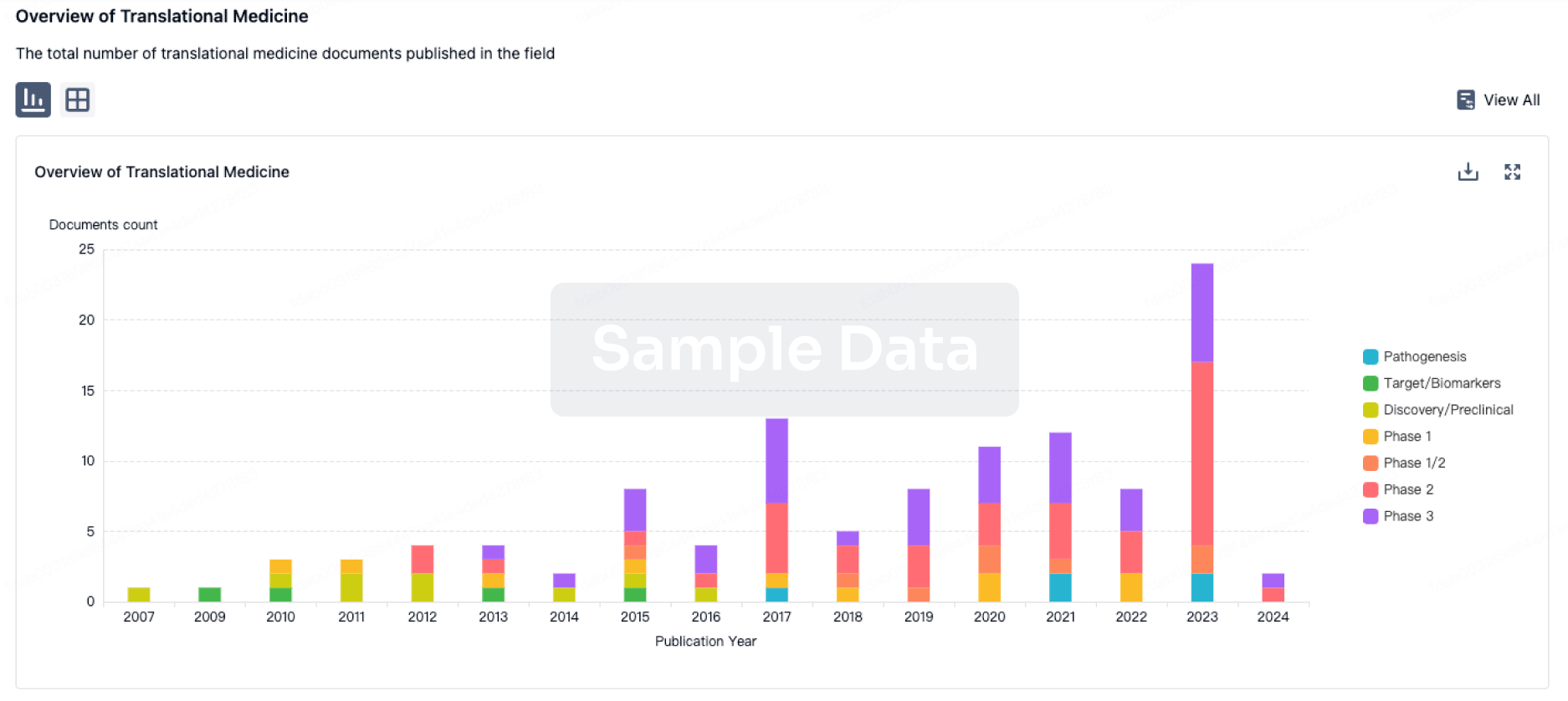
Deal
Boost your decision using our deal data.
login
or
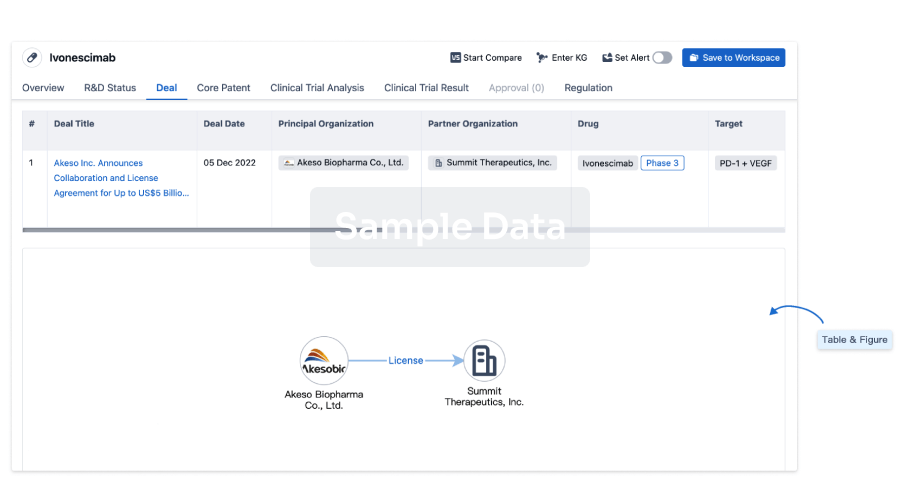
Core Patent
Boost your research with our Core Patent data.
login
or
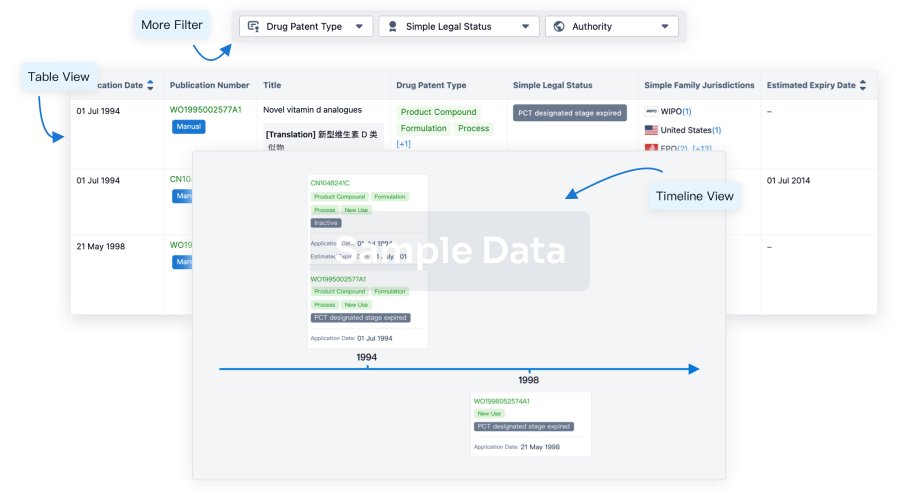
Clinical Trial
Identify the latest clinical trials across global registries.
login
or
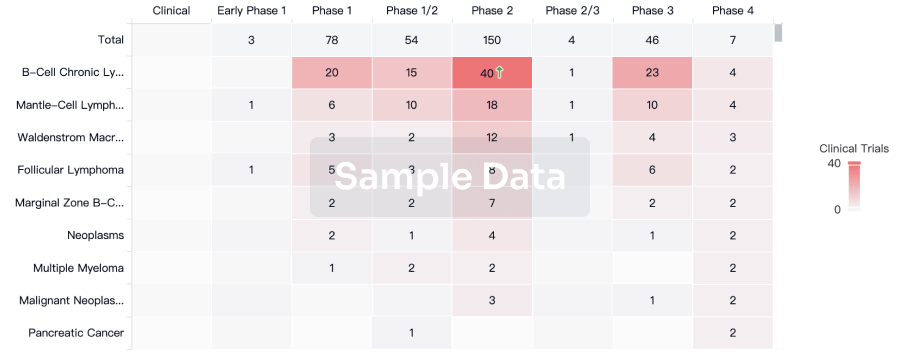
Approval
Accelerate your research with the latest regulatory approval information.
login
or
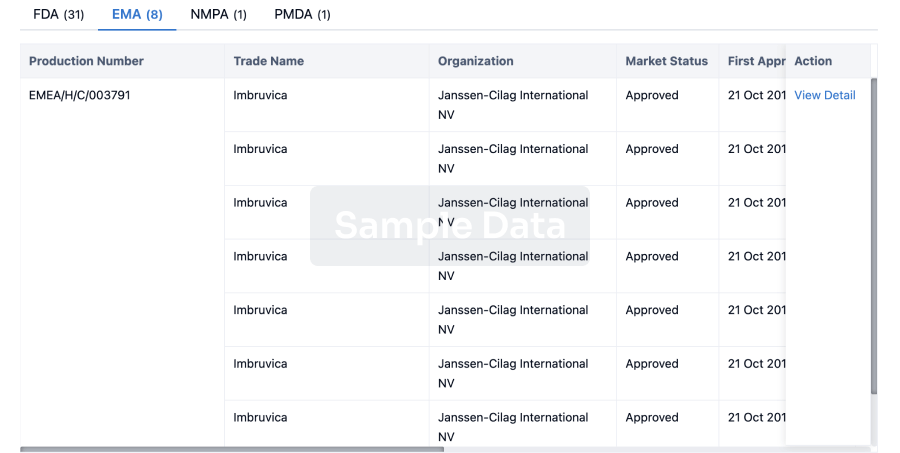
Regulation
Understand key drug designations in just a few clicks with Synapse.
login
or

AI Agents Built for Biopharma Breakthroughs
Accelerate discovery. Empower decisions. Transform outcomes.
Get started for free today!
Accelerate Strategic R&D decision making with Synapse, PatSnap’s AI-powered Connected Innovation Intelligence Platform Built for Life Sciences Professionals.
Start your data trial now!
Synapse data is also accessible to external entities via APIs or data packages. Empower better decisions with the latest in pharmaceutical intelligence.
Bio
Bio Sequences Search & Analysis
Sign up for free
Chemical
Chemical Structures Search & Analysis
Sign up for free
